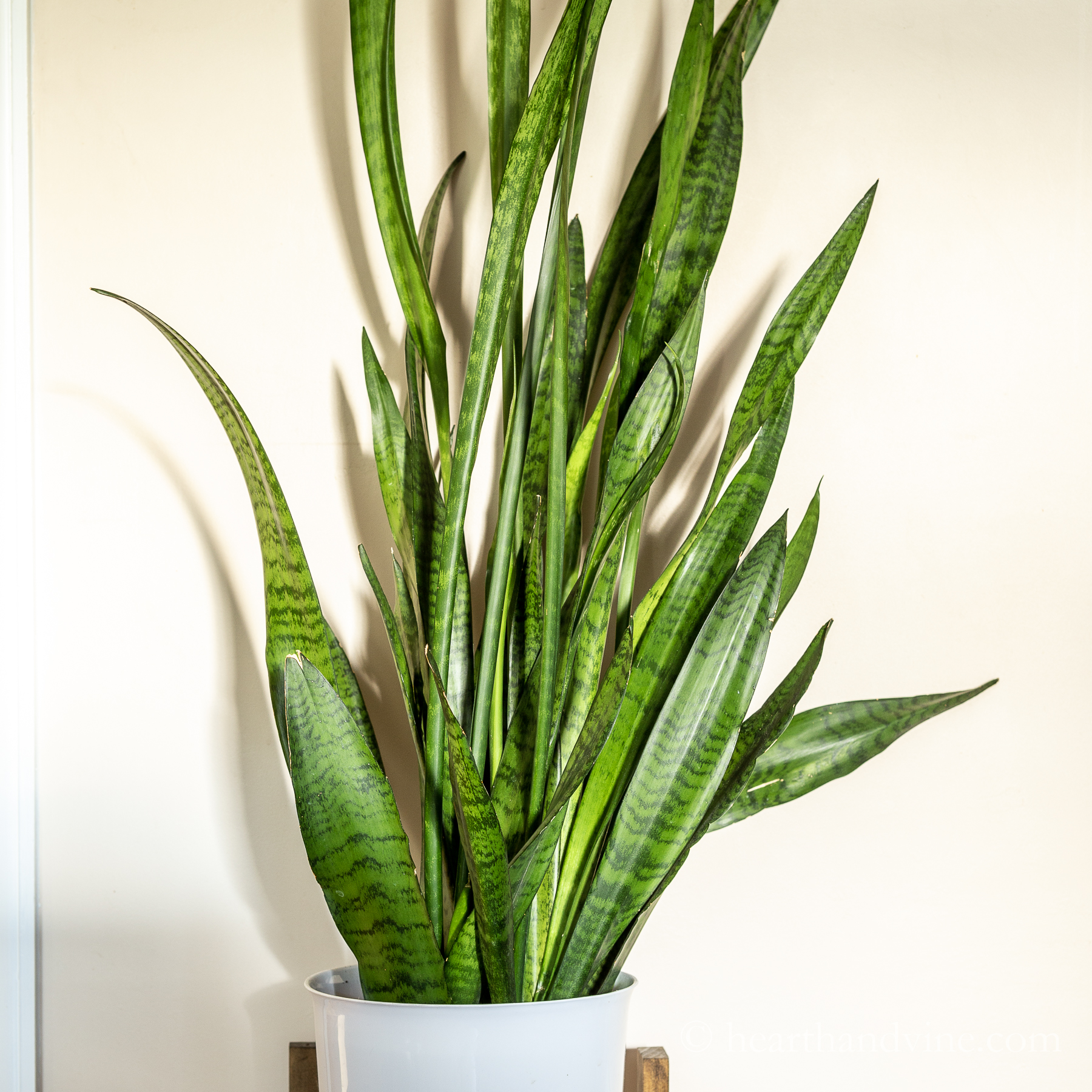The Sansevieria trifasciata, commonly known as the snake plant or mother-in-law’s tongue, is a beloved houseplant renowned for its hardiness and striking appearance. Its unique, sword-shaped leaves and low-maintenance nature make it an ideal choice for both novice and experienced plant enthusiasts. This article delves into the fascinating world of the Sansevieria trifasciata, exploring its origins, characteristics, care requirements, and the benefits it brings to our homes.
Origins

The Sansevieria trifasciata is native to tropical West Africa, where it thrives in arid and rocky environments. It belongs to the Asparagaceae family and has been cultivated for centuries due to its ornamental value and practical uses.
Physical Characteristics
The Sansevieria trifasciata is a succulent perennial that exhibits a variety of forms and sizes. Its most distinctive feature is its upright, sword-shaped leaves, which can grow up to several feet tall. The leaves are typically dark green with lighter green or silver horizontal bands. Some cultivars, such as the Laurentii variety, feature striking yellow or white margins on the leaves.
Light and Temperature
The Sansevieria trifasciata is a versatile plant that can tolerate a wide range of light conditions. It thrives in bright, indirect light but can also adapt to low-light environments. However, it’s important to avoid exposing it to direct sunlight for prolonged periods, as this can scorch the leaves.

In terms of temperature, the snake plant prefers warm temperatures between 65°F and 85°F (18°C and 30°C). It can tolerate slightly cooler temperatures, but prolonged exposure to cold drafts can damage the plant.
Watering
One of the reasons for the Sansevieria trifasciata’s popularity is its remarkable drought tolerance. It can store water in its succulent leaves, allowing it to survive periods of neglect. Overwatering is a common mistake that can lead to root rot. As a general rule, water your snake plant deeply but infrequently, allowing the soil to dry out completely between waterings.
Soil and Fertilizing
The Sansevieria trifasciata prefers well-draining soil to prevent waterlogging. A cactus or succulent potting mix is ideal, as it provides adequate drainage and aeration.
While the snake plant is not a heavy feeder, it can benefit from occasional fertilization during the growing season. Use a balanced liquid fertilizer diluted to half strength and apply it once a month. Avoid fertilizing during the winter months when the plant is dormant.
Propagation

The Sansevieria trifasciata can be easily propagated through various methods:
Division
Carefully remove the plant from its pot.
Leaf Cuttings
Cut healthy, mature leaves into sections of about 4 inches (10 cm) in length.
Air Purification
:max_bytes(150000):strip_icc()/snake-plant-care-overview-1902772-04-d3990a1d0e1d4202a824e929abb12fc1-349b52d646f04f31962707a703b94298.jpeg)
One of the most significant benefits of the Sansevieria trifasciata is its ability to purify the air. NASA studies have shown that this plant can effectively remove harmful toxins such as benzene, formaldehyde, and trichloroethylene from the air.
Low Maintenance
The Sansevieria trifasciata is a low-maintenance plant that can thrive with minimal care. Its ability to tolerate neglect and its resilience to pests and diseases make it an excellent choice for busy individuals or those who are new to plant care.
Aesthetic Appeal
The Sansevieria trifasciata adds a touch of elegance and sophistication to any space. Its unique leaf shape and striking patterns create a visually appealing focal point in homes and offices.

While the Sansevieria trifasciata is generally resistant to pests and diseases, it can occasionally be affected by the following:
Mealybugs
Mealybugs are small, white, cottony insects that can infest the plant’s leaves and stems. They can be removed manually with a cotton swab dipped in rubbing alcohol or treated with insecticidal soap.
Root Rot
Overwatering is the primary cause of root rot. To prevent root rot, ensure that the plant is planted in well-draining soil and avoid overwatering. If root rot occurs, remove the affected plant from the pot, trim away the rotten roots, and repot it in fresh, dry soil.
The Sansevieria trifasciata is a versatile and resilient houseplant that offers numerous benefits. Its ability to purify the air, its low-maintenance nature, and its striking appearance make it a popular choice for people of all experience levels. By following the care guidelines outlined in this article, you can enjoy the beauty and health benefits of this remarkable plant for years to come.
Sansevieria Trifasciata Plant
